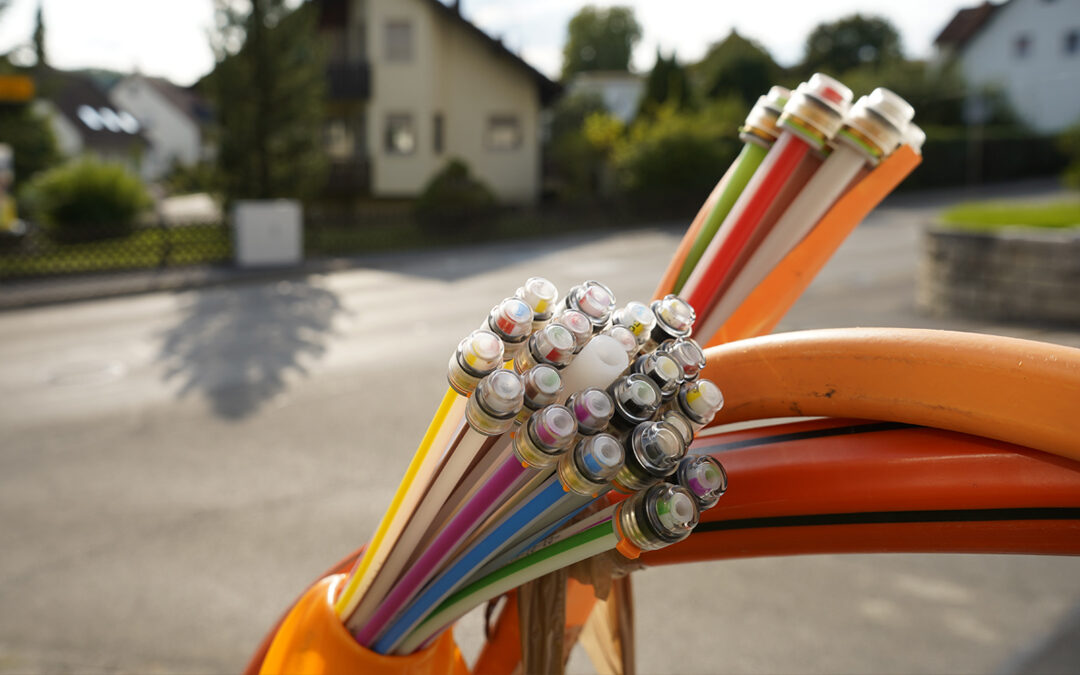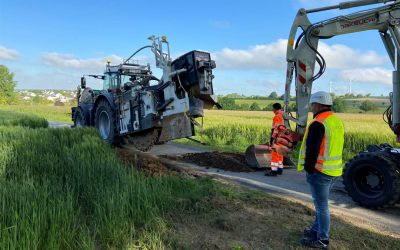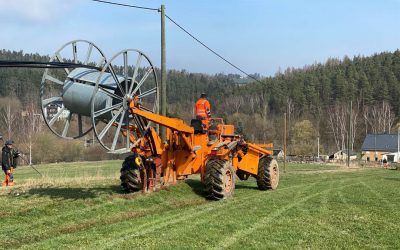Another major step has been taken towards faster and cheaper fibre optic expansion: the German Institute for Standardization (DIN) approved the draft of DIN standard 18220 in November. This standardizes so-called minimally invasive installation methods and provides more legal certainty for local authorities carrying out the expansion.
The more successful broadband expansion progresses, the more inventive companies become when it comes to installation methods. One good reason for this is the cost factor. After all, civil engineering accounts for around 80 percent of an expansion project. There are open, trenchless, sewer and above-ground installation methods for fiber optics. The open methods include, for example, the ploughing and trenching method or above-ground laying along telecommunication lines. There is also the flush drilling method and earth displacement using earth rockets. The methods are selected according to topological characteristics and special project requirements.
Each installation method has its own limitations and application scenarios, which depend in particular on the surface conditions, the existing infrastructure and the length of the route to be laid. Where which technology can and should be preferably used therefore depends on the local conditions and must be agreed with the responsible road construction authority. However, the “alternatives” have one thing in common: they save money and time. The federal government’s digital strategy and the agreements of numerous federal states therefore pay greater attention to these methods, which are to be used to a greater extent.
There is another reason why alternative installation methods are currently being hotly debated. The DIN (German Institute for Standardization) has summarized the framework conditions for laying fibre optic cables in a DIN standard. The final draft of “E DIN 18220” was available at the end of the year. More than 30 committee members from the fields of science and research as well as the public and private sectors have been working on this standard since 2020. This document provides guidelines for the construction and instructions for the planning and documentation of underground telecommunications broadband infrastructures using trenching, milling and plowing methods for microducts, microduct composites, cable ducts and underground telecommunications cables. In addition, this document specifies procedures for the construction of trenches of different widths and depths, the laying of telecommunications infrastructure, as well as backfilling and restoration in the area of road plots in public spaces and private properties.
Various working groups have been formed on the topics of line construction and execution, materials and research, the public sector and telecommunications. Following a public discussion, a final standard is expected in spring 2023. Associations and lobby groups are already positioning themselves. This is because this DIN standard will describe, for example, the exact construction principles, construction designs and, among other things, the building material mixtures to be used for backfilling, which will give local authorities more legal certainty and construction companies more security. The DIN draft can still be commented on until January 18.
External links:
BMDV brochure “Laying methods for gigabit expansion” (BMDV download page)
Our “Alternative installation methods” series
DIN 18220 comes into effect – Alternative installation methods standardized
DIN 18220 comes into force on July 28. The full name of the standard is "DIN 18220:2023-08. Trenching, milling and ploughing methods for laying empty conduit infrastructures and fiber optic cables for telecommunications networks" and describes in detail the methods...
Classic and alternative installation methods
In order to enable the expansion of fiber optic networks throughout Germany, the players involved have a variety of installation methods at their disposal. The methods must be selected according to topological characteristics and special project requirements. Each...
Robots lay fiber optics in the sewer
An employee prepares the robot for use. Between 100 and 250 meters of fibre optic cable can be laid in this way per day. (Source: Fast Opti-com) Laying fiber optic cables in sewage pipes using robots is one of the alternative installation methods. These offer many...
Using traditional technology for a future-proof broadband connection: the plowing method as an alternative laying technique
The cable plow in use on a field. At the top left is the empty conduit, which is unwound from the drum and then laid in the freshly plowed furrow Photo: IBZ Neubauer When implementing broadband projects, different methods are used to lay the fiber optic cables. In...
DIN 18220 comes into effect – Alternative installation methods standardized
DIN 18220 comes into force on July 28. The full name of the standard is "DIN 18220:2023-08. Trenching, milling and ploughing methods for laying empty conduit infrastructures and fiber optic cables for telecommunications networks" and describes in detail the methods...
Classic and alternative installation methods
In order to enable the expansion of fiber optic networks throughout Germany, the players involved have a variety of installation methods at their disposal. The methods must be selected according to topological characteristics and special project requirements. Each...
Robots lay fiber optics in the sewer
An employee prepares the robot for use. Between 100 and 250 meters of fibre optic cable can be laid in this way per day. (Source: Fast Opti-com) Laying fiber optic cables in sewage pipes using robots is one of the alternative installation methods. These offer many...
Using traditional technology for a future-proof broadband connection: the plowing method as an alternative laying technique
The cable plow in use on a field. At the top left is the empty conduit, which is unwound from the drum and then laid in the freshly plowed furrow Photo: IBZ Neubauer When implementing broadband projects, different methods are used to lay the fiber optic cables. In...





